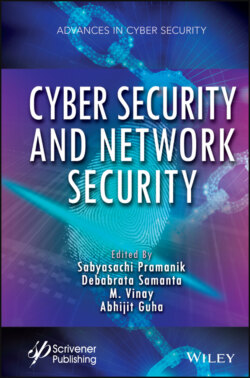Читать книгу Cyber Security and Network Security - Группа авторов - Страница 45
1.6 Future Research Direction
ОглавлениеIn our proposed model, data is encrypted as a result no one can tamper with our data; hence, we need to think about the metadata of the encrypted data which is being sent from client/user to server (cloud). Here, we can introduce some error detection schema like checksum. Checksum is a numerical value which is based on the bytes in encrypted data. The sender client will calculate the value of data and send the value with the data. The cloud server will use the same algorithm to check whether the numerical value is the same or not. If such a concept can be introduced in future, then we need not to depend on VPC. Apart from that, machine learning algorithms as well to verify the authenticity of the user can be used.
Blowfish is a symmetric encryption algorithm. During encryption and decryption, data blocks or cipher blocks are divided into fixed lengths. We can think of Blowfish for our future research because it provided remarkable results on ECB and CBC modes having the lowest latency among AES and DES with just around 3 s in both the modes, whereas AES had a whooping latency of around 16 s. One noticeable thing is that Blowfish has a 448 long key yet it outperformed other encryption algorithms [15].
We can think of reducing the Lambda Execution time by putting the dependency files in a separate library so deployment packages can be unpacked faster. Distribution of files according to deployment packages and function’s code class files in a separate file reduces Lambda Execution time than keeping everything in a single large file with too many class files having function’s code as Lambda has to execute the full large file then.
